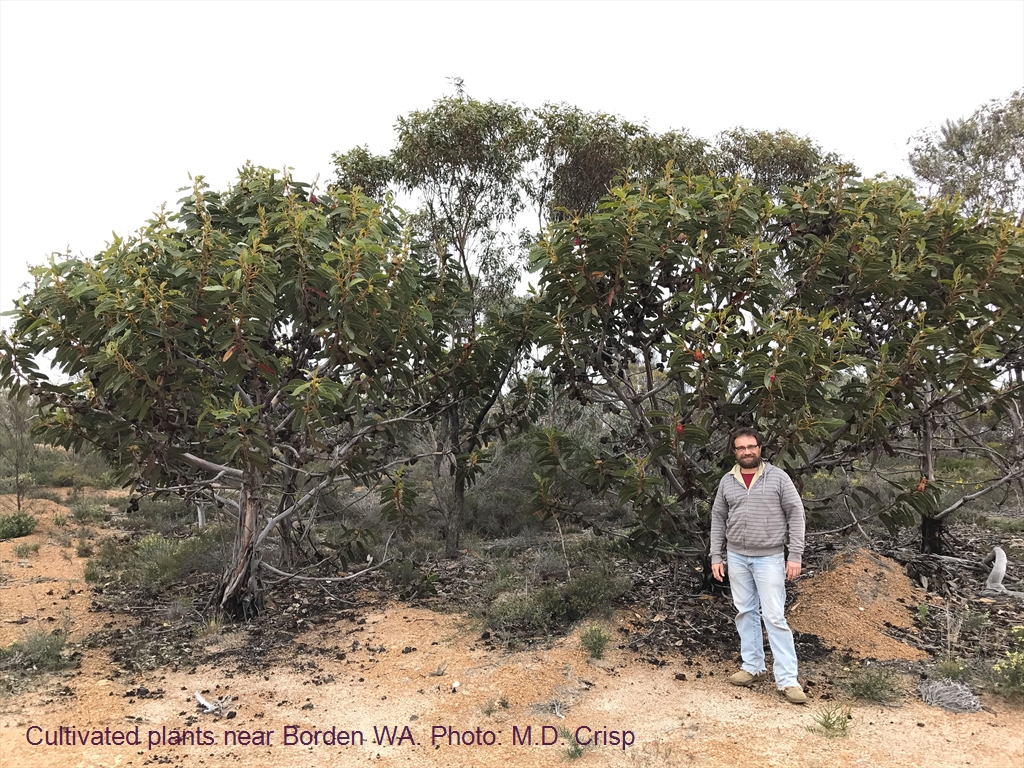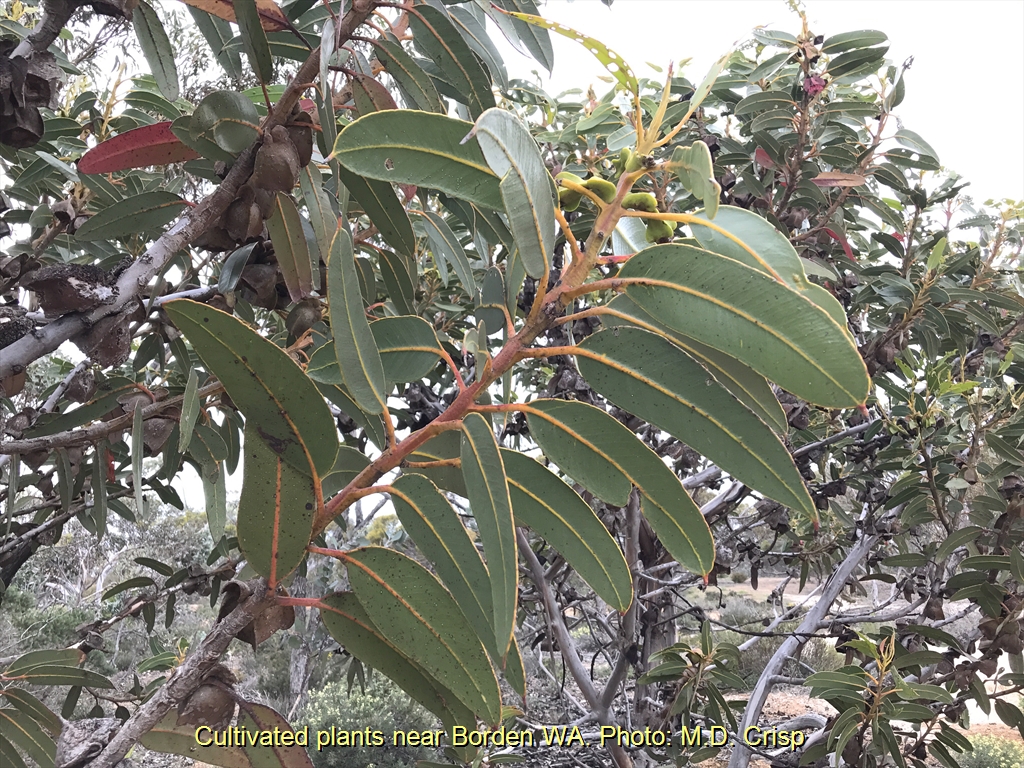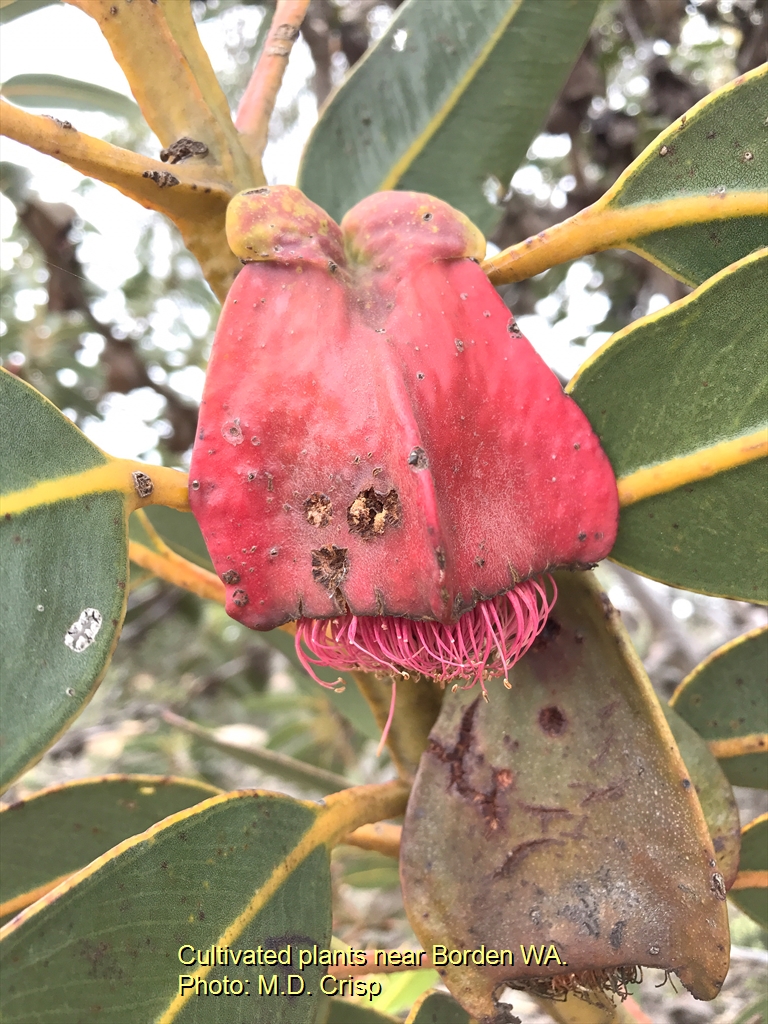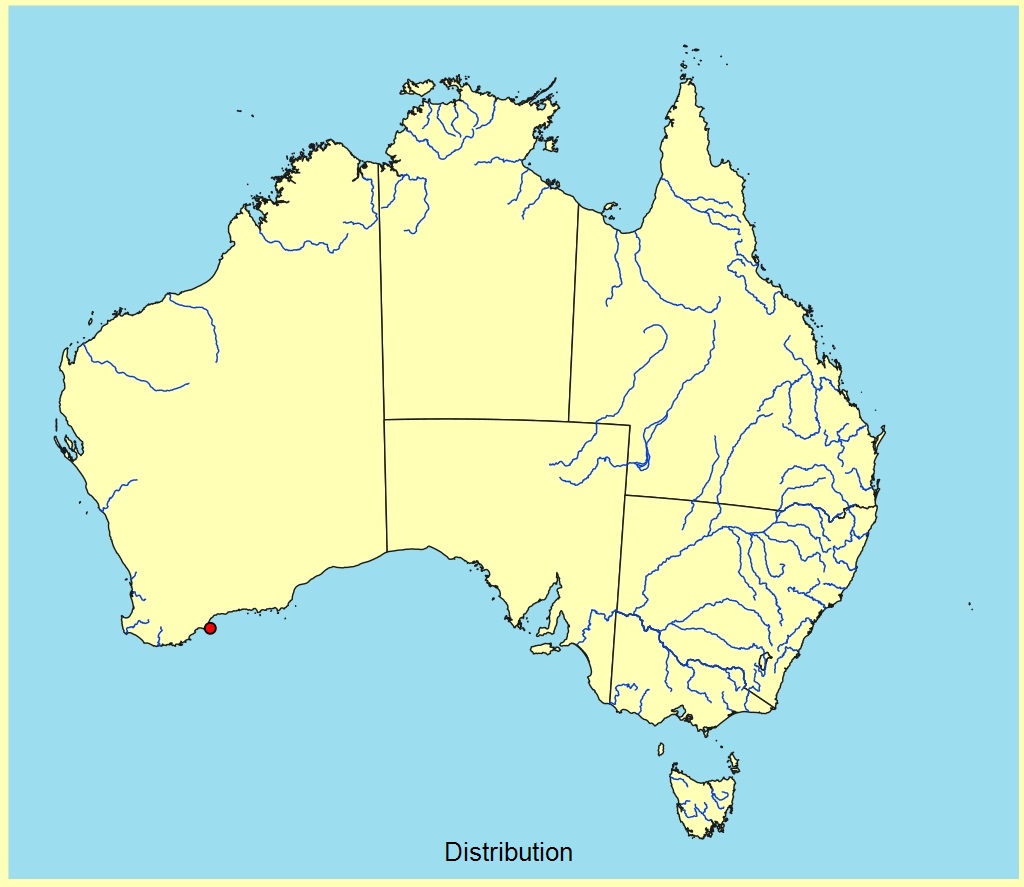Eucalyptus | Symphyomyrtus | Dumaria | Tetrapterae
Euclid - Online edition
Eucalyptus brandiana
Eucalyptus brandiana Hopper & McQuoid, Australian Systematic Botany22: 188-191, figs 5,7 (2009).
T: Western Australia: (precise location withheld): Fitzgerald River Inlet, 22 Sept 2006, L. Sweedman LSW 7007, S.D.Hopper & N.K.McQuoid; holo PERTH07478542; isotype CANB [Note CANB isotype not yet received 29 Oct 2018].
Mallet to 5 m tall. Lacking a lignotuber. Crown restricted to upper part of branches.
Bark smooth throughout, grey to silvery grey and salmon, shedding in irregular strips.
Branchlets square in cross-section; lacking oil glands in the pith.
Juvenile growth (coppice or field seedlings to 50 cm): not seen.
Adult leaves coarse, thick, usually alternate, petioles 3.8–4.5 cm long; blade lanceolate to oblong, 14–23.8 cm long, 4.2–6.2 cm wide, base tapering to petiole or rounded, margin entire, apex pointed, concolorous, glossy, green, side-veins greater than 45° to midrib, reticulation dense, intramarginal vein remote from margin, oil glands intersectional, few or not visible.
Inflorescence axillary unbranched, peduncles rigidly down-turned, with broadly curved wings (length unknown); bud solitary, sessile. Mature buds cuboid with 4 broad wings at the angles (5–6.5 cm long, 3–6 cm wide), hypanthium red tapering a bit basally, scar present (outer operculum shed early), operculum pyramidal (1.5–3 cm long), stamens inflexed, filaments glandular, anthers cuboid, versatile, sub-basifixed, dehiscing by longitudinal slits, style long and straight, stigma tapered, locules 4, number of ovule rows unknown. Flowers red to pink.
Fruit on rigidly down-turned peduncles, sessile; cuboid and prominently winged, 5.6–6.8 cm long, 4.8–6 cm wide (including wings), disc descending vertically, valves 4, enclosed.
Seeds blackish, 3–4 mm long, shortly pyramidal, with prominent ridges continuous with conspicuous encircling marginal flange, dorsal surface shallowly reticulate, hilum terminal.
Cultivated seedlings (measured at ca node 10) : cotyledons reniform; stems rounded to square in cross-section; leaves always petiolate, opposite for 2 to 4 nodes then alternate, elliptic, 9–11 cm long, 4–5.5 cm wide, dull green. (Data from Hopper & McQuoid 2009).
Reportedly flowering in winter and spring but also in January and February.
A mallet species endemic to Western Australia and restricted to Fitzgerald River National Park. It has smooth bark, large thick-textured glossy green crown leaves, and large winged reddish flower-buds and winged square fruit borne solitarily in the leaf axils.
In the classification of Brooker (2000) four species, E. tetraptera, E. stoatei, E. forrestiana and E. dolichorhyncha form series Tetrapterae sharing the features: reniform cotyledons, large buds (3 cm or more) and fruit borne solitary in leaf axils, reddish hypanthia of buds, outer operculum shed early in bud development, ovules in 6 or more rows on the placentae, seed with prominent flange encircling the body and a terminal hilum. Hopper & McQuoid (2009) included two new species in series Tetrapterae, viz. Eucalyptus brandiana and E. sweedmaniana, both closely related to E. tetraptera sharing the coarse large leaves, winged bud and fruit features and pink-red stamens, while E. stoatei, E. forrestiana and E. dolichorhyncha all have yellow stamens and thin narrower crown leaves.
Eucalyptus brandiana differs from its two close relatives, E. tetraptera and E. sweedmaniana, in its lack of a lignotuber, erect single-stemmed habit and in having the largest leaves, buds and fruit in the group.
Habit
Seedlings
Adult leaves cm
Fruit cm (incl wings)
tetraptera
lignotuber, upright mallee rarely prostrate
erect
9–28 x 2.8–11.6
3.5–6.6 x 2.5–5.5
brandiana
no lignotuber, erect mallet habit
erect
14–23.8 x 4.2–6.2
5.6–6.8 x 4.8–6
sweedmaniana
lignotuber, decumbent to prostrate shrub
prostrate
16.5–26.3 x 4.5–6.7
3.4–3.8 x 3–4.1
Data after CANB specimens and Hopper & McQuoid (2009).
Eucalyptus brandiana : after Grady Brand (1961–), curator of the Western Australian Botanic Garden and associated nursery, Kings Park and Botanic Garden, Perth.










